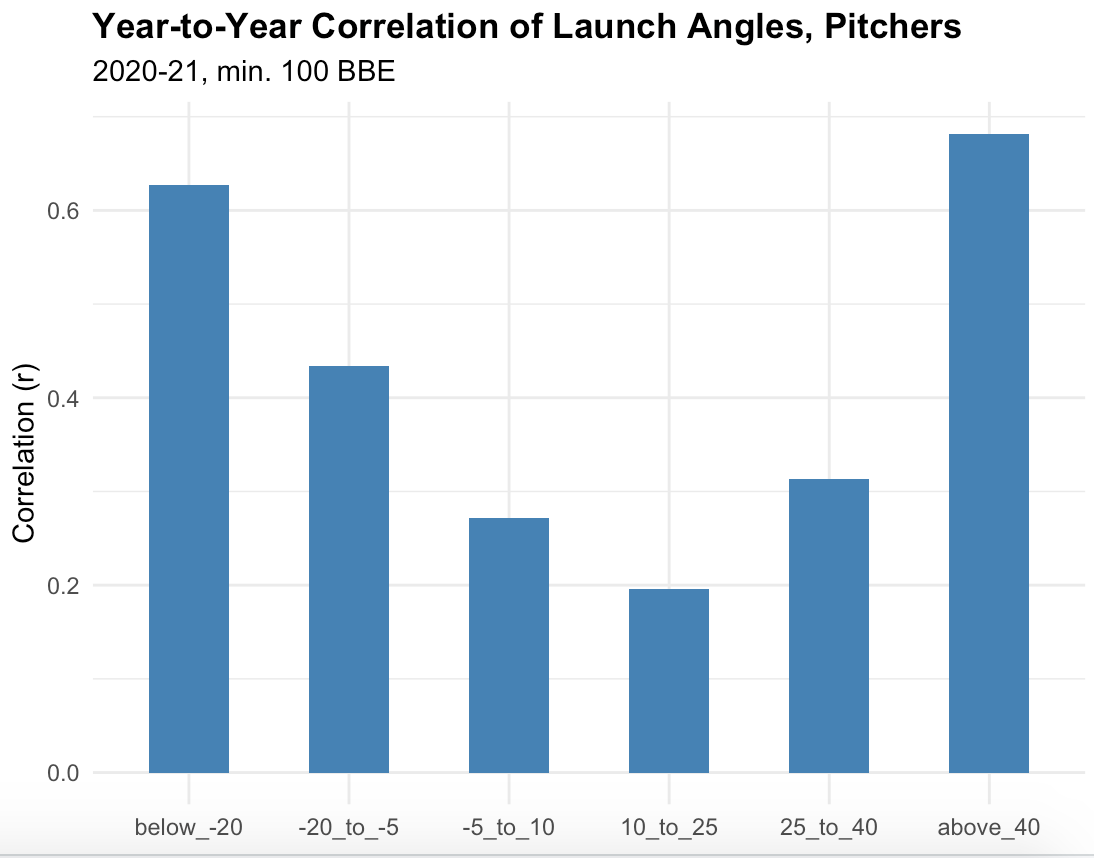Chosen in the ninth round of the 2018 draft, Tarik Skubal had a meteoric rise in prospect pedigree, tearing through the minor leagues in just 145 innings. He allowed just one earned run in 22.1 innings in 2018, then compiled a 2.58 ERA in high A and a 2.13 ERA in Double-A, but what caught the eye of analysts and prospect hounds alike were the strikeout and walk rates. He punched out about 40% of the batters in 2018 versus a walk rate of about 5% and posted strikeout rates of 30.3% and 48.2% in high A and Double-A, respectively, against walk rates of 5.9% and 10.6% in ’19.
Those numbers earned Skubal a place on our 2019 Tigers list before the start of that season, with Eric Longenhagen and Kiley McDaniel noting that he “dominated in pro ball after signing by throwing about 80% fastballs. He’s a ground-up rebuild who had third-round stuff at his best in college.” After he continued to dominate in 2019, Skubal climbed the 2020 version of the list, placing fourth behind three excellent prospects in their own right.
Skubal missed the entirety of the July summer camp last year but showed enough at the alternate site to earn a call-up, making his major league debut on August 18. It didn’t go to plan, though: He struck out a healthy 27.9% of batters with an 8.2% walk rate but also allowed a 72.3% fly ball rate with a 20% HR/FB ratio. That led to an ugly 2.53 HR/9 and a 5.63 ERA over 32 innings.
Unsatisfied with his 2020, Skubal made the pilgrimage to Driveline Baseball over the offseason. There, he first tried to make improvements to his existing changeup, but nixed that in favor of working on a splitter after immediately feeling comfortable with the offering used by his highly-touted teammate, Casey Mize.
Despite the new offspeed pitch, Skubal surrendered a 6.14 ERA in April despite allowing a miniscule .242 BABIP. His walk rate increased from 2020, and he was allowing even more contact in the air. And the splitter was not doing him any favors, with a pedestrian 10.2% SwStr% (the average for a left-handed pitcher’s splitter is 24.5%). He also had no control over the pitch, posting a 33.9% zone rate. Those two factors led to a .539 wOBA allowed on it.
About midway through the month, manager A.J. Hinch mentioned in a postgame press conference that Skubal would throw more breaking pitches going forward at the expense of his new splitter. That wasn’t all; he made a substantial change in terms of fastball usage after his start on the last day of April.
Skubal Pitch% by Start
| Date |
CH |
CU |
FC |
FF |
FS |
SI |
SL |
| 2021-04-04 |
0.0 |
5.7 |
0.0 |
59.8 |
4.6 |
0.0 |
29.9 |
| 2021-04-10 |
0.0 |
9.3 |
0.0 |
48.0 |
14.7 |
0.0 |
28.0 |
| 2021-04-15 |
0.0 |
6.8 |
3.4 |
50.0 |
13.6 |
0.0 |
26.1 |
| 2021-04-21 |
0.0 |
0.0 |
0.0 |
56.5 |
14.5 |
0.0 |
29.0 |
| 2021-04-25 |
0.0 |
6.6 |
0.0 |
45.9 |
21.3 |
0.0 |
26.2 |
| 2021-04-30 |
0.0 |
5.2 |
5.2 |
55.8 |
13.0 |
0.0 |
20.8 |
| 2021-05-07 |
21.9 |
8.3 |
0.0 |
58.3 |
0.0 |
0.0 |
11.5 |
| 2021-05-14 |
20.0 |
9.5 |
1.1 |
49.5 |
0.0 |
2.1 |
17.9 |
| 2021-05-19 |
13.3 |
3.3 |
0.0 |
54.4 |
0.0 |
0.0 |
28.9 |
| 2021-05-25 |
14.0 |
10.8 |
0.0 |
48.4 |
0.0 |
1.1 |
25.8 |
| 2021-05-30 |
15.8 |
9.5 |
1.1 |
36.8 |
0.0 |
18.9 |
17.9 |
| 2021-06-05 |
15.5 |
5.8 |
0.0 |
45.6 |
0.0 |
12.6 |
20.4 |
| 2021-06-11 |
11.5 |
9.4 |
0.0 |
44.8 |
0.0 |
9.4 |
25.0 |
| 2021-06-16 |
23.1 |
8.8 |
1.1 |
36.3 |
0.0 |
20.9 |
9.9 |
| 2021-06-22 |
11.3 |
8.2 |
1.0 |
51.5 |
0.0 |
11.3 |
16.5 |
| 2021-06-27 |
18.6 |
4.9 |
0.0 |
35.3 |
0.0 |
23.5 |
17.6 |
| 2021-07-03 |
21.3 |
5.3 |
1.1 |
43.6 |
0.0 |
7.4 |
21.3 |
| 2021-07-08 |
20.4 |
6.5 |
1.1 |
30.1 |
0.0 |
25.8 |
16.1 |
SOURCE: Baseball Savant
Read the rest of this entry »

